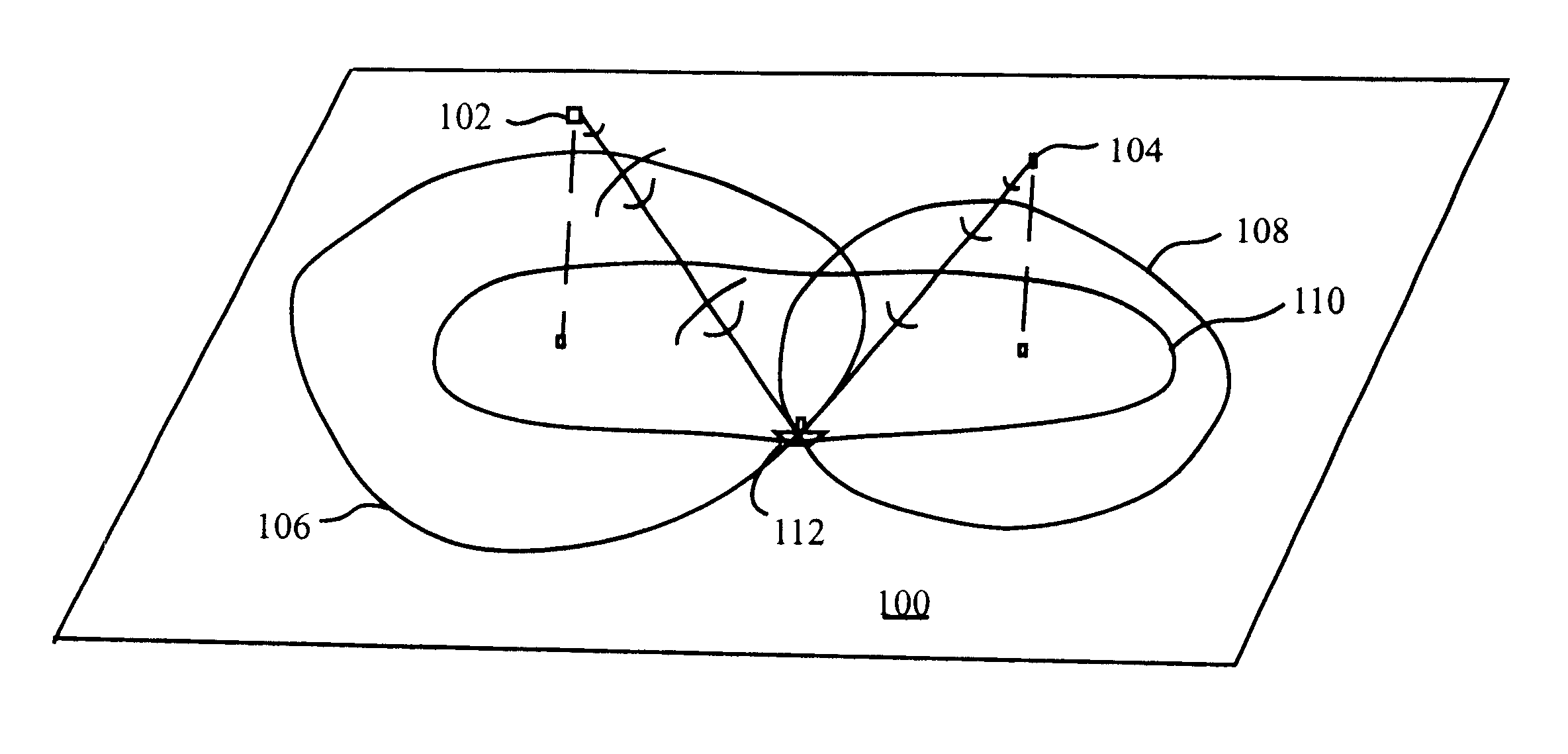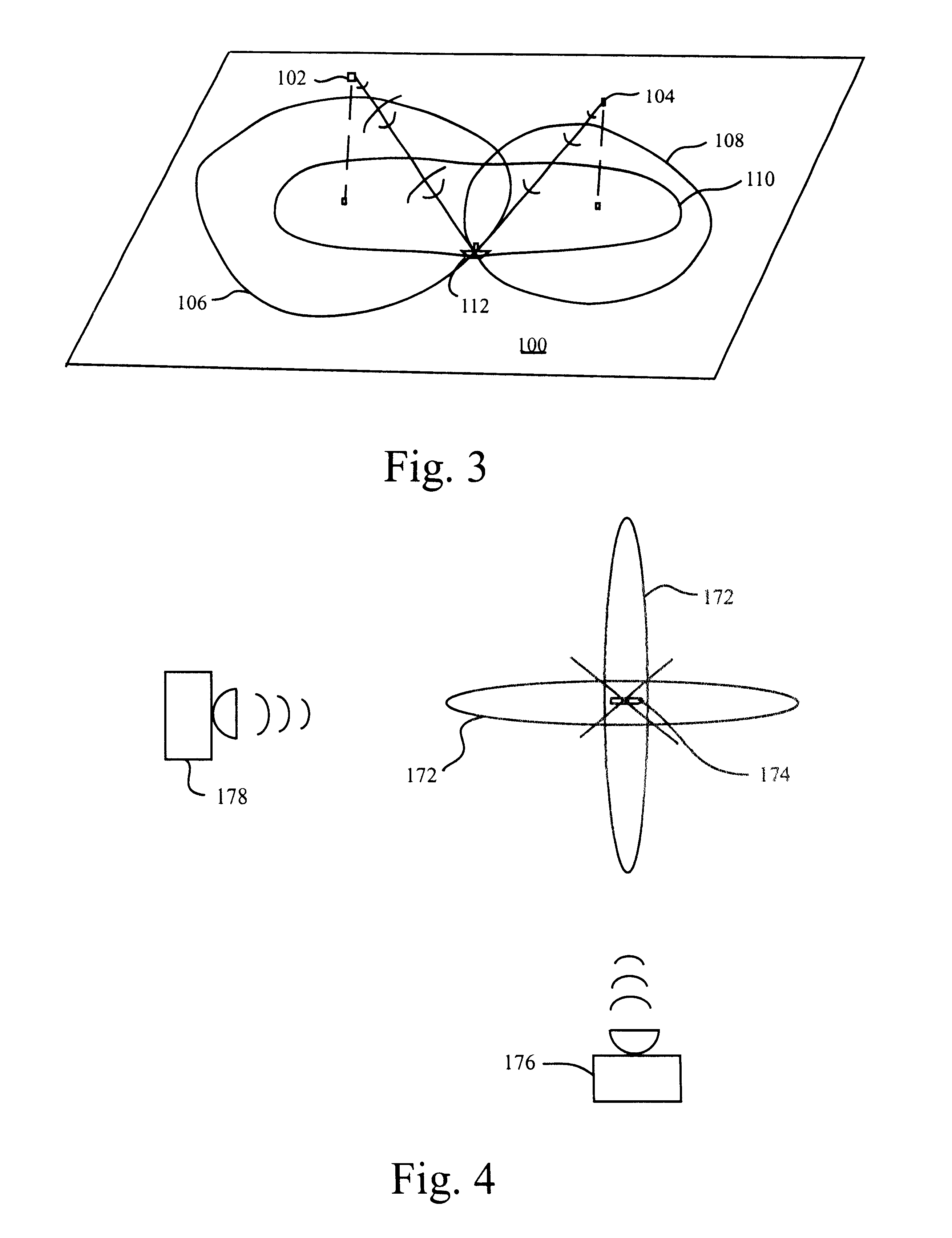Radar system having simultaneous monostatic and bistatic mode of operation
a radar system and monostatic technology, applied in the field of pulse doppler radar, can solve the problems of insufficient accuracy of target's cross-range (also known as its azimuthal position or sometimes, doppler direction), and even more exaggeration of azimuthal positional uncertainty,
- Summary
- Abstract
- Description
- Claims
- Application Information
AI Technical Summary
Problems solved by technology
Method used
Image
Examples
Embodiment Construction
In a first preferred embodiment, two independent airborne or spaceborne radar sensors operate monostatically and bistatically, simultaneously, to surveil for moving targets that are constrained to travel on the ground and for known sensor locations and altitudes with respect to the ground. In a second preferred embodiment, two independent sensors (ground-based, airborne, or spaceborne) surveil for moving targets that are not constrained to travel over a known surface position such as the ground and, wherein the moving targets may be airborne or spaceborne.
FIG. 1 shows a basic example of geometry in locating objects detected by a single pulse doppler radar. In this example, a target 50 is detected by a single radar sensor 52. The most accurately determinable target's position coordinate is the target's range from the sensor 52 represented by ray 54. For a particular range 54, the target 50 may be treated as lying within a spherical shell 56. The thickness of the shell 56 is equal to ...
PUM
 Login to View More
Login to View More Abstract
Description
Claims
Application Information
 Login to View More
Login to View More - R&D
- Intellectual Property
- Life Sciences
- Materials
- Tech Scout
- Unparalleled Data Quality
- Higher Quality Content
- 60% Fewer Hallucinations
Browse by: Latest US Patents, China's latest patents, Technical Efficacy Thesaurus, Application Domain, Technology Topic, Popular Technical Reports.
© 2025 PatSnap. All rights reserved.Legal|Privacy policy|Modern Slavery Act Transparency Statement|Sitemap|About US| Contact US: help@patsnap.com



